While traveling to France tends to conjure images of luxury hotels and 3-star Michelin restaurants, camping is becoming one of the most popular ways for international tourists to explore the country. The Pyrénées-Orientales Department is one of the best places to discover the range of camping options France offers while visiting such landmarks as the Abbaye Saint-Martin-du-Canigou, hiking across spectacular mountain trails such as Lac Des Bouillouses, or taking a dip in renowned beaches such as Canet-en-Roussillon, Saint-Cyprien, Argeles-sur-Mer, and Torreilles.
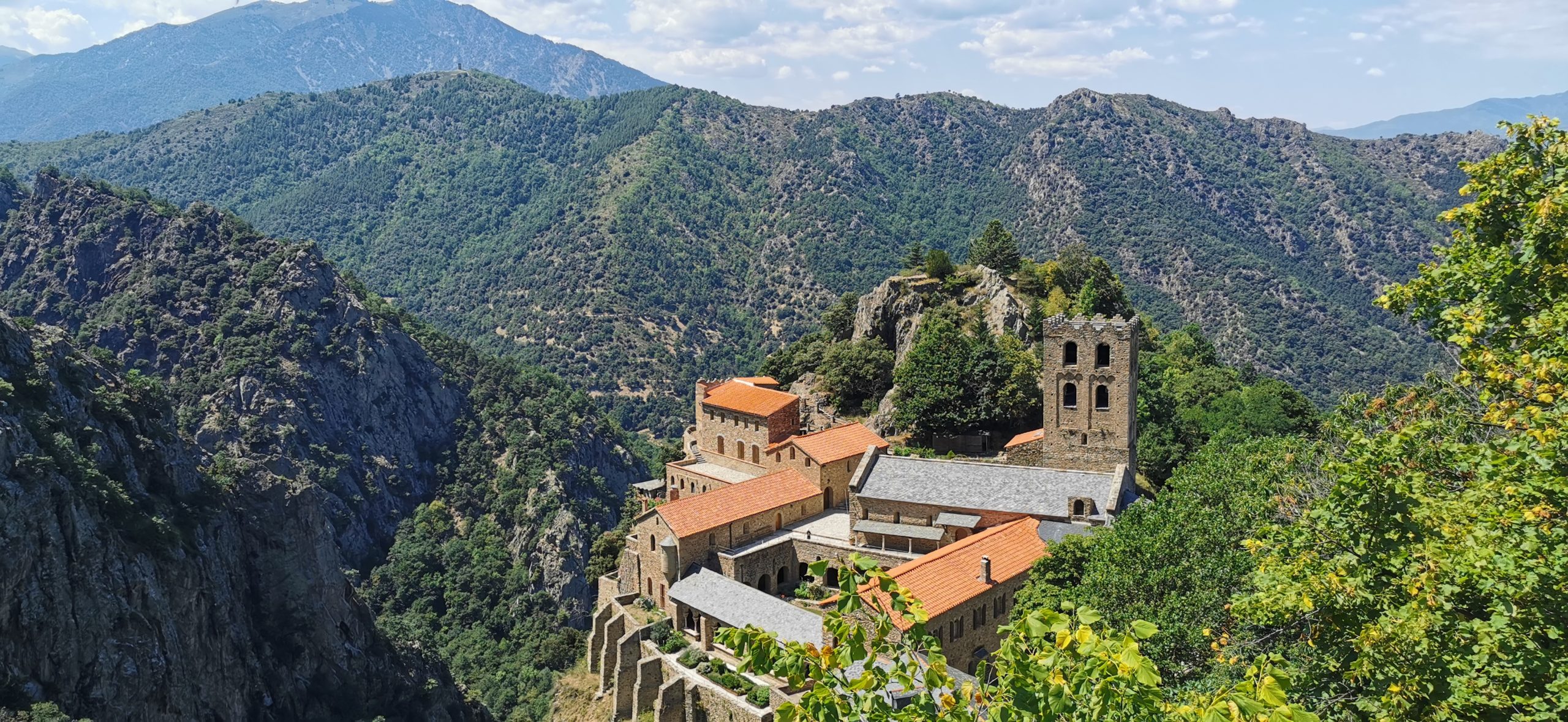
Abbaye Saint-Martin-du-Canigou in the Pyrénées-Orientales.
According to an annual review published by INSEE, France’s national statistics agency, camping proved to be one of the brighter spots of a difficult 2020 tourism season. The number of nights spent camping in the summer of 2020 reached 84% of France’s summer 2019 capacity. Of the international visitors who came to France last summer, almost two-thirds stayed at a campsite.
We already live in France, but we certainly saw that surge in camping demand when we decided at the last minute to take a vacation last summer. Like much of the world, we had been cooped up in our home as the pandemic raged. As July rolled around, it seemed like France had beaten the worst of it and tourism began to open up again.
With no plans, we decided to explore the Pyrénées-Orientales, the department that lies at the eastern edge of the Pyrénées Mountains along the Spanish border. This region was historically part of Spain until the Treaty of the Pyrenees in 1659 that ended the Franco-Spanish war. King Louis XIV took possession of the region while also securing his marriage to a Spanish princess.
That Spanish influence is evident everywhere in the region that proudly calls itself Catalan Country (Pays Catalan). The red and yellow Catalan flag is omnipresent, often just below the French flag.
Having decided to visit the Pyrénées-Orientales, we still had some big choices. The region is vast and varied. Because we had previously visited the beaches along the Mediterranean, we decided to stay further inland and split our stay between 2 different campgrounds so we could explore more of the terrain.
Aloha, Pyrénées!
Learning about camping in France has often posed its own challenges. We previously lived in California where we were accustomed to camping in state and national parks which are abundant and spectacular. But camping in such parks is not allowed in France. Instead, campsites are mostly private and can vary widely in quality and amenities.
In fact, the French prefer what’s known as “5-star camping.” These tend to be campsites with features such as swimming pools, movie theaters, bars, restaurants, and other forms of pampering. (Read about our own 5-star camping adventure as well as a more basic camping trip.)
For our first stop, we picked something in the middle: The 3-star campground Aloha Camping in the town of Amélie les Bains. What does that “3-star” mean? In this case, Aloha is a sweet, family-oriented facility with a swimming pool, evening activities, a small restaurant, and a bar.
While Aloha has basic camping sites and parking for mobile homes, we opted for one of the little cabins to ease into this new adventure. With air conditioning and a kitchenette, we were extremely comfortable and relaxed.

Aloha Camping
Because the country was just starting to open up again, Aloha was not fully booked, and therefore extremely tranquil. Many of the normal evening activities were not available. But that was fine. We spent a quiet day lounging at the pool surrounded by the picturesque mountains around us. We rolled out another day to visit the town’s renowned spa. (Read more on our adventures exploring the region’s thermal baths here.)
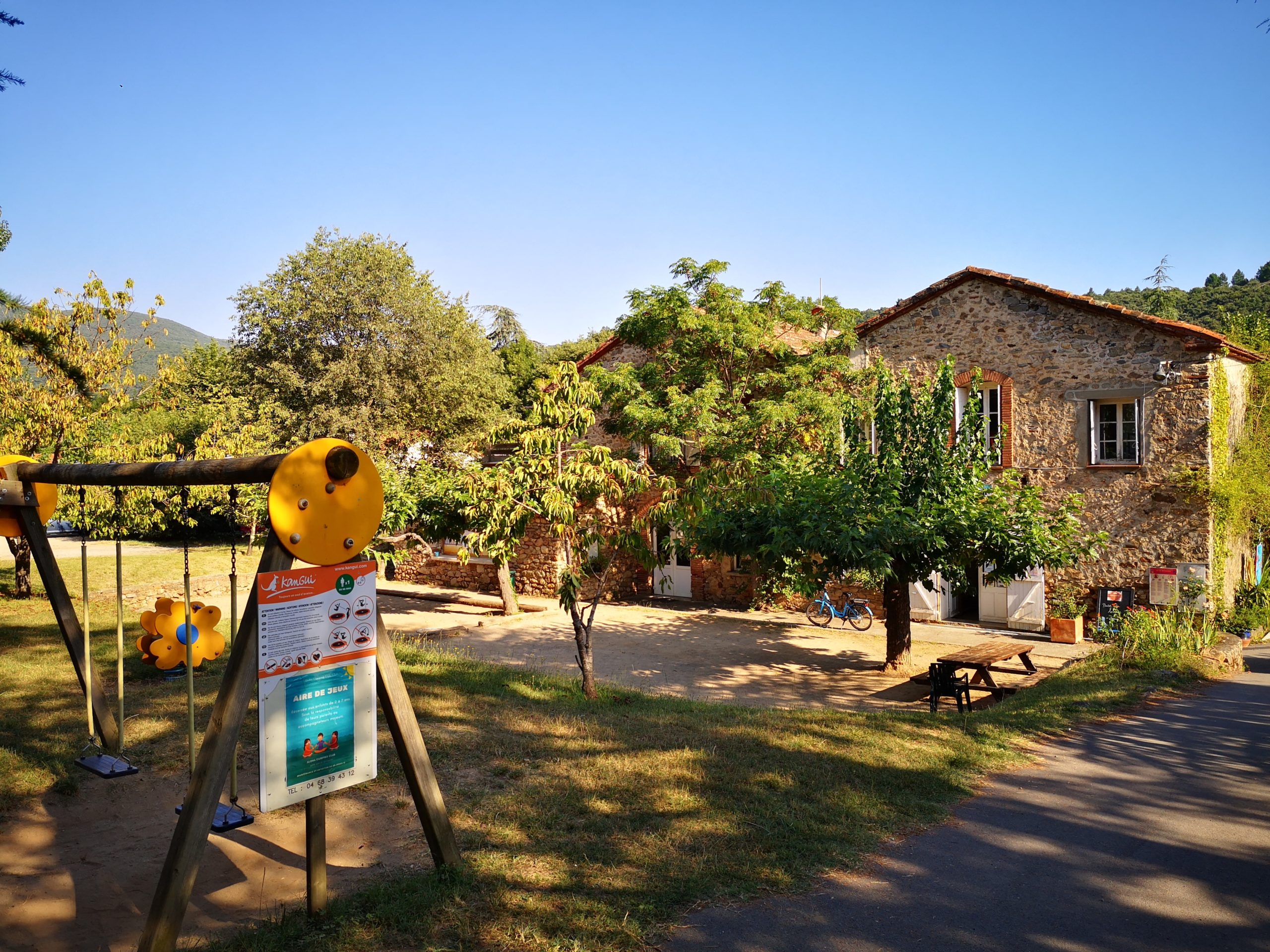
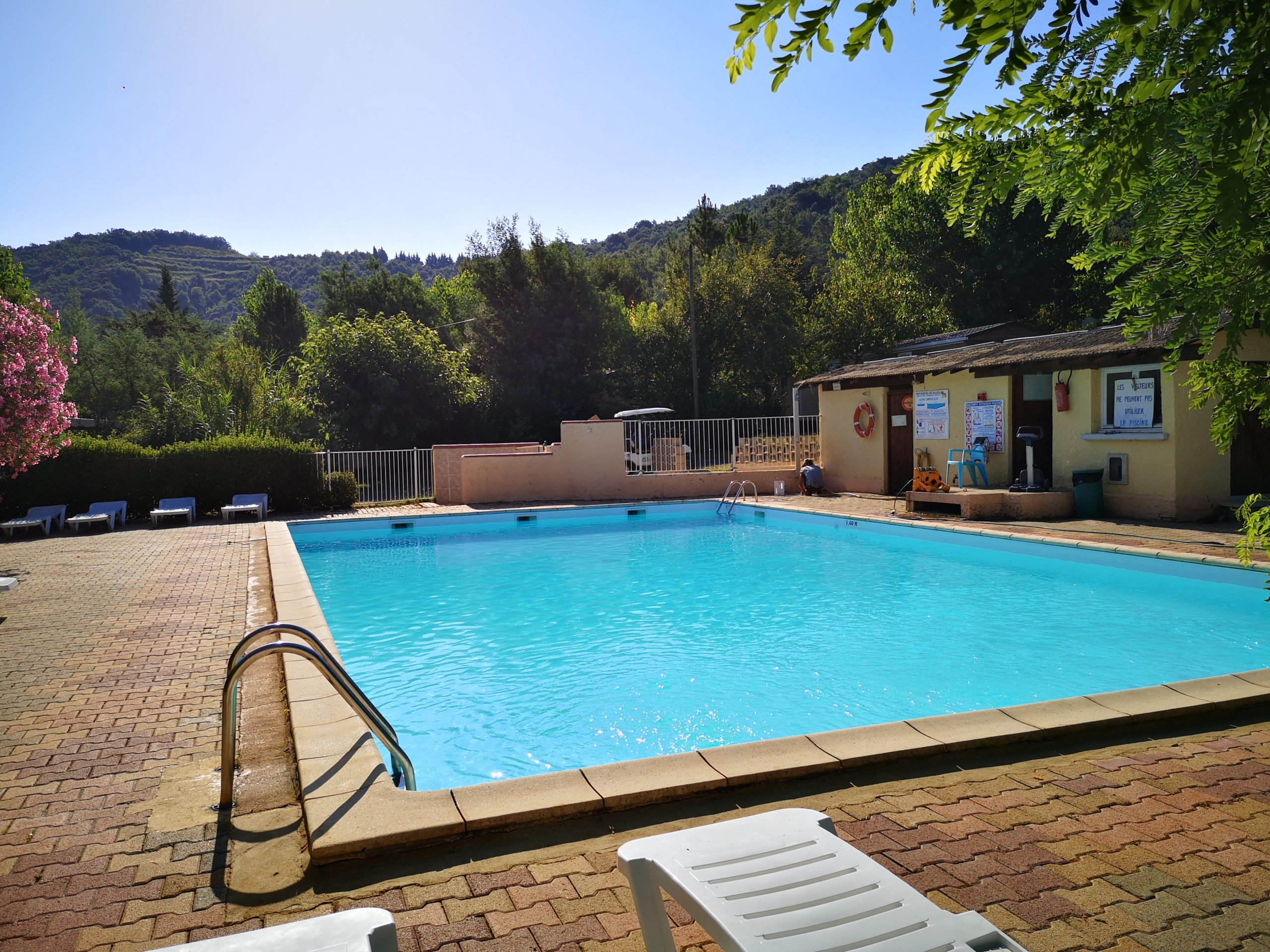
But the highlight of this part of the trip was a half-day ride on electric bikes led by Thierry, one of the campground’s co-owners.
On Two Wheels
We rented the bikes from Aloha, including bike helmets. We then set out for a 4-hour ride with the bikes allowing us to alternate between human power and an electric boost when we needed the power to get up the hills. Thierry, whose father first opened the campground decades ago, was a knowledgeable and fun guide who spun stories about his childhood in the region while providing detailed descriptions of the surrounding countryside.
The first leg took us across a bridge designed by Gustave Eiffel, who of course is best known for a certain tower in Paris.
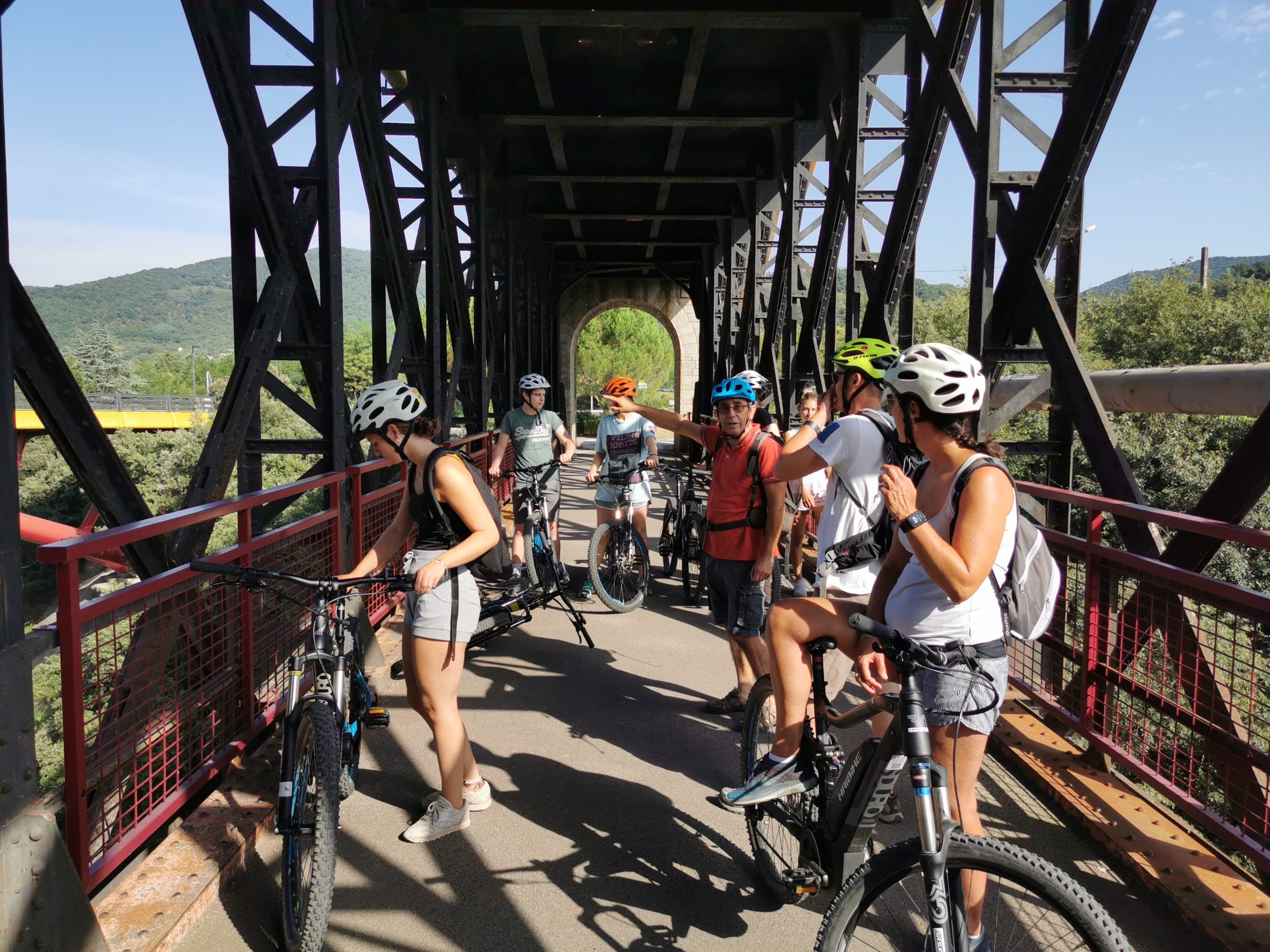
From there, we climbed up into the foothills for some lovely views of the surrounding area.
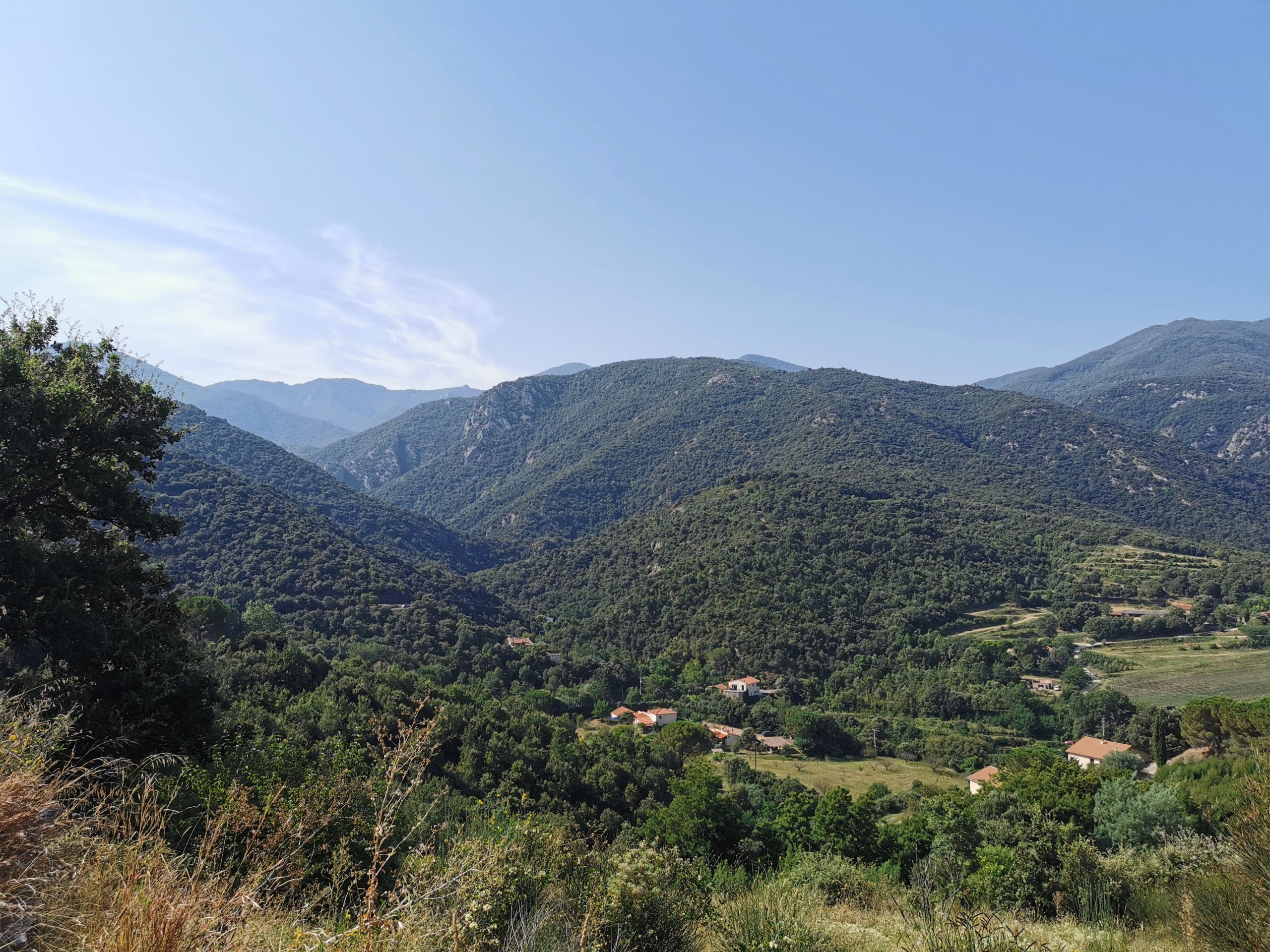
Vallespir region of the Pyrénées-Orientales.
And then finally, we descended into the town of Céret.
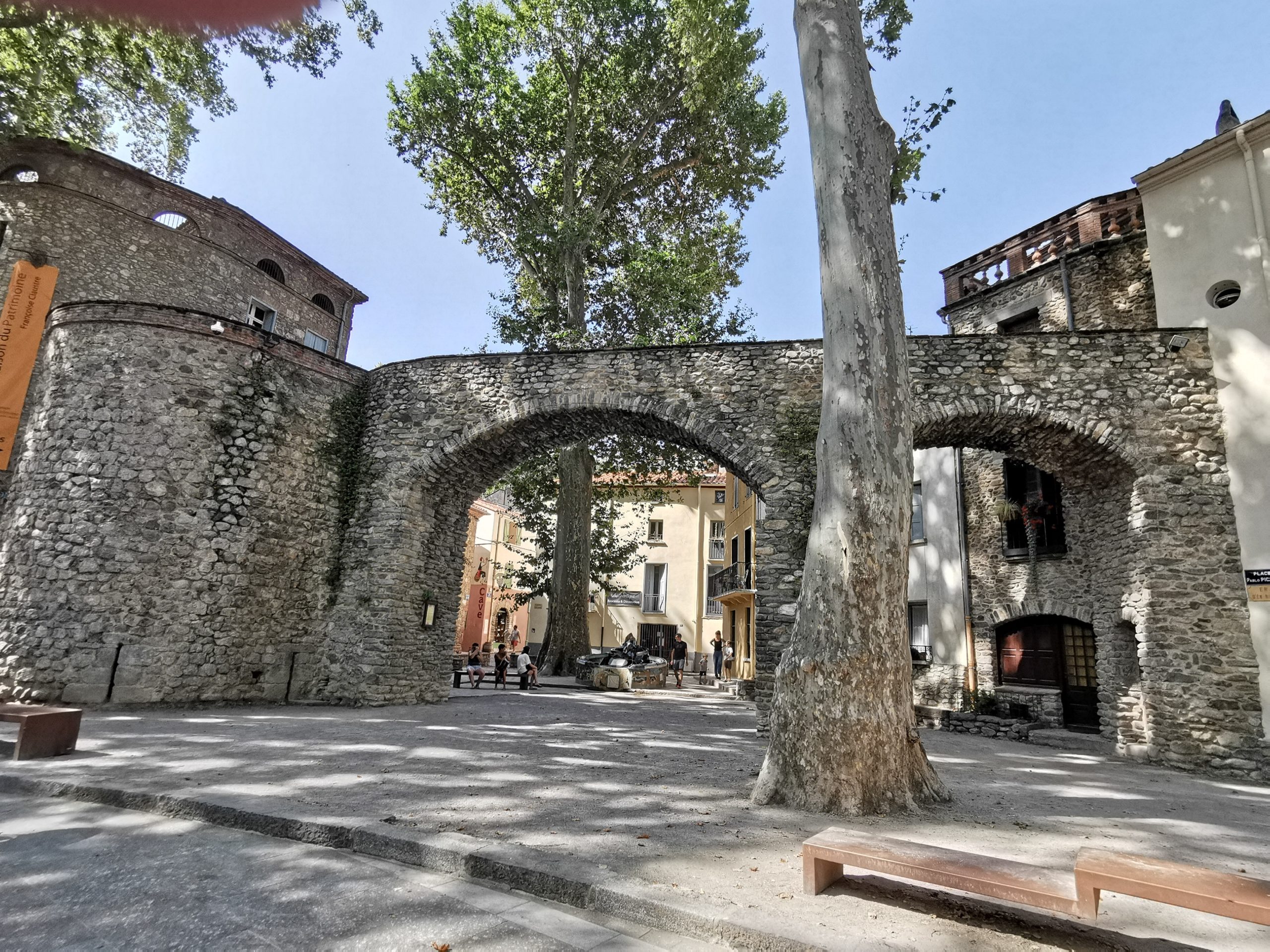
Céret, France
It was a splendid day that helped cement our appreciation of Aloha for giving us a great start to a much-needed vacation.
Further On Up
For the second part of our vacation, we made a looping drive that took us higher into the mountains and deeper into this region. We had booked our second campground at Pla De Barrès. (Note: In writing up this article, I’ve learned on their website that the city of Mont-Louis, which operated the campground, has decided to stop operating it. A search for new owners is underway and the campground is closed for now.)
Pla De Barrès was a 2-Star campground. Again, it’s important not to think of the star rating like hotels or restaurants. It’s not a sign of quality, but rather, a recognition of the level of amenities it offers. In this case, Pla De Barrèes was a simpler family campground, with a place to pitch a tent, some central shower and bathroom facilities, and a small campground store. And that was about it.
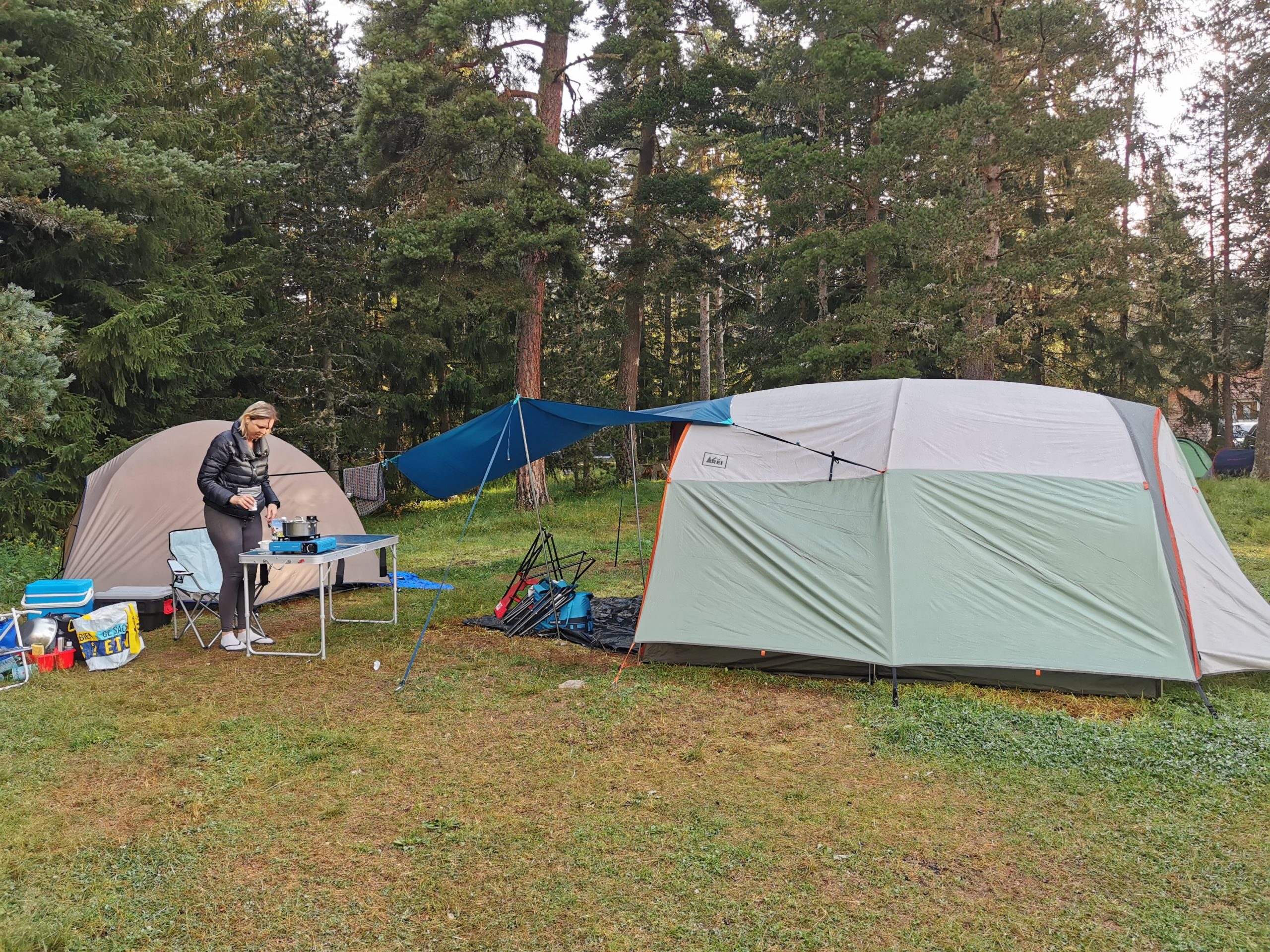
We like simple. But even better, the campground had 2 features that made it magical. First, it’s set right along La Têt, a river that is only a big stream at this point. And second, it offered gorgeous views of the mountains.
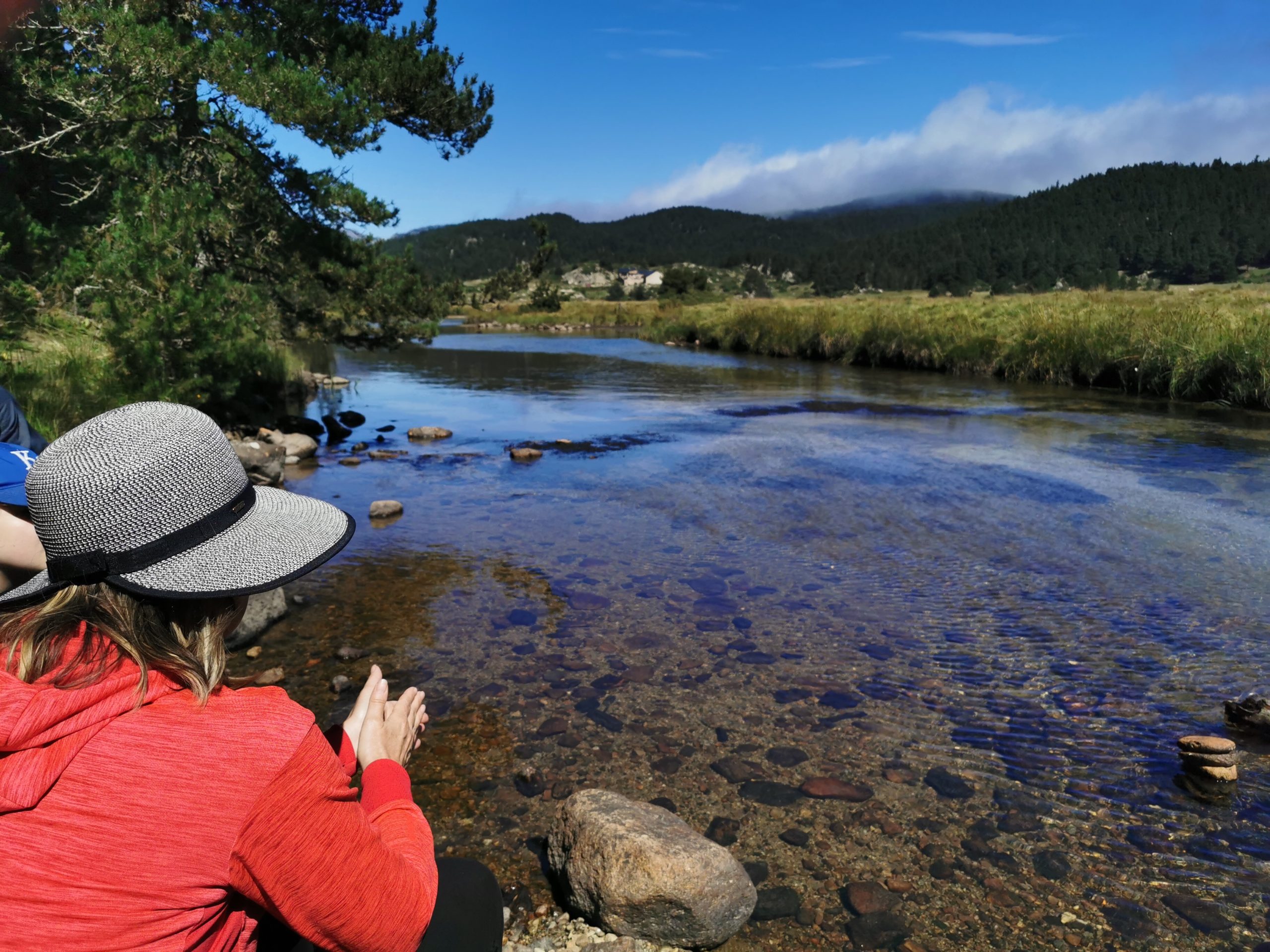
Le Têt near the Pla de Barrès campround.
Directly out of the campground, we took a half-day hike on an easy trail that looped back around. A cool breeze kept things from getting too warm in the early August daytime. When we returned, we treated ourselves to some ice cream from the camp store and returned to our tents for a quiet afternoon of lounging around and doing nothing. A perfect day.
Pyrénées-Orientales’ Must See
Over the next few days, we saw and did too much to cover it all here. But there are a few things that should be on anyone’s list if they visit this region.
Yellow Train
The region’s famed Yellow Train takes passengers across viaducts that afford panoramic views of the mountain landscape. This is a great way to see other towns and connect with the trailheads of some spectacular hikes. Buy tickets in advance as the train is typically full in the summer months.

The Yellow Train of Cerdagne
Saint-Martin du Canigou monastery
We hiked up a 30-minute winding path to get to the spectacular overlook of the Saint-Martin du Canigou monastery (see the first picture). Dating back to the 12th century, the monastery was actually decimated after the French Revolution, but last century was painstakingly restored. The result is mesmerizing and well worth the trip. Walking past the monastery leads to a path that takes you to the overlook where we had a picnic while taking in the beauty.
Vauban Citadel of Mont-Louis
Just down the road from the campground is the town of Mount-Louis, which has a magnificent citadel at its heart designed by Sébastien Le Prestre de Vauban. During the 17th and 18th centuries, Vauban served as the king’s chief architect and was in charge of building military installations like this one across France (We’ve visited a similar one in Lille.). He was widely considered a master engineer and was also responsible for overseeing the construction of the Canal du Midi. The Mont-Louis citadel offers a fascinating look back at this remarkable time, but visits are limited because it’s still an operating military base.
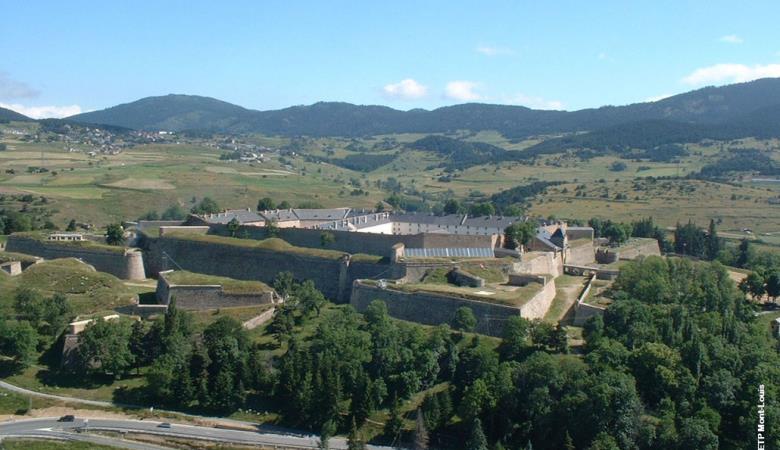
Vauban Citadel of Mount-Louis. Photo courtesy of Pyrénées-Orientales Office of Tourisme.
Lac Des Bouillouses
From the campground, there is a bus stop about a 5-minute walk. Get there early as possible because the line will be long. The road to Lac Des Bouillouses is closed to most public traffic as it narrows to one lane at several points. But it’s worth the hassle to get to one of the more inspiring hiking areas in the Pyrénées.
In this case, the lake is a beautiful scene. But cross the damn on foot to get to the other side and you can ascend onto a trail called Boucle des Étangs du Carlit that leads past 12 other smaller lakes. The day we went, the trail was packed. We had to take our time and navigate a big crowd at the start. This thinned out as we climbed further up. We took one of the shorter loops past just 9 lakes and which took about 6 hours.
Before returning to the campground, we stopped at the restaurant next to the lake for some well-deserved ice cream, soft drinks, while recharging and feeling gratitude for having finally visited the Pyrénées-Orientales.

Boucle des Étangs du Carlit above the Lac Des Bouillouses.
_________________
Disclosure: our camping was hosted however all opinions expressed are entirely my own.
Chris O’Brien is an American journalist living in Toulouse, France. Before moving in 2014, he was based in Silicon Valley for 15 years, he wrote about technology and startups for the San Jose Mercury News and Los Angeles Times. From France, he publishes the twice-weekly newsletter French Crossroads which covers news and travel in France.








